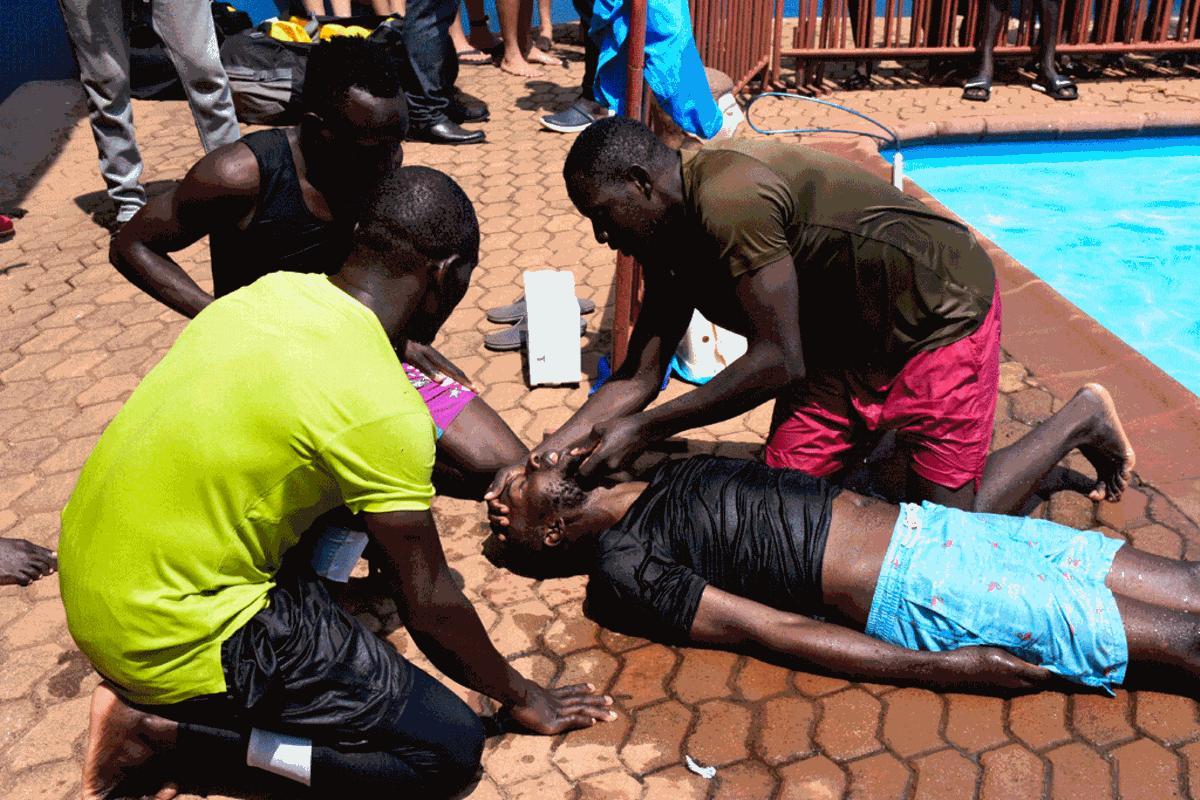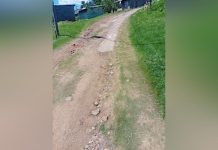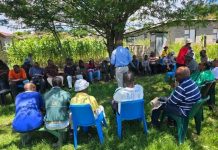Africa-Press – Lesotho. Josephine Namulindwa, 63, a resident of Kalangala Island, almost lost her life after their boat capsized in Lake Victoria. Namulindwa cannot hold back her tears as she narrates the tragic incident, 33 years later.
“We were coming from Nkose Island on our way to Kasenyi Landing Site [Entebbe] on Lake Victoria.
Our boat encountered heavy waves and capsized at around 10am,” she recounts. Namulindwa says of the 13 people, eight died – two women and six men. When the boat capsized, Ms Namulindwa says she heard a voice telling her not to breathe.
“I held my breath and floated on the surface,” she says. When a person takes a breath while drowning, they bring water into their airway—which ultimately closes it.
The lack of oxygen makes the person unconscious as water fills the lungs, according to scientists. The survivor says she waited seven hours on the water before she could be rescued.
“After struggling for a while even as the wave was still disturbing the boat, I managed to grab the canoe on the boat.
I held it with my left hand until a boat from Kasenyi found us at around 6:30pm in the evening,” she recounts. Namulindwa adds: “I had sustained bruises on my chest, knees and nail cuts on my feet. On the rescue boat, I found a German girl who gave me a T-shirt and something to wrap around my waist. ”
Dr Frederick Oporia, a lecturer at Makerere University School of Public Health, who does research on drowning, says government should invest in emergency services for water accidents to make easy rescues.
“The average rescue time is 45 minutes for marine police but others will take around 7 hours.
We need to reduce the rescue time because someone can die after two or three minutes,” he says. He, however, notes that the Ministry of Health has secured (14) boat ambulances.
At least 3,500 Ugandans across 74 districts are reported to have drowned over a two-and-half year period, according to a 2021 report by Makerere University’s School of Public Health.
This translates in 1,400 deaths per year. Dr Oporia says available data shows that in lakeside fishing communities, “Uganda has the world’s highest drowning death rate of 502 per 100,000 cases.
That is 60 times higher than the estimate on the continent. ” Failed attempt to rescue The Ministry of Health spokesperson, Mr Emmanuel Ainebyoona, says he has never gone back to Aero beach in Entebbe where he lost a friend to drowning.
“I was at Makerere University and I was the president of the Mass Communication Students Association. We organised a beach bash which is a common thing with university students,” he recounts. “We went to Aero beach.
This was a group of journalism students but there was another third-year Law student who asked to be part of the beach bash. We went on a coaster. The law student delayed getting on the coaster but waited for him,” he adds.
Ainebyoona says as they were playing sand soccer, and taking a boat ride while others were in the water, they realised that the third-year Law student had gone missing.
“But his phones were going through, so we thought he was among the other revellers on the beachside.
But we kept wondering and by 10pm, we had not seen him,” he says. “After realising that he had left his phone on the coaster, we decided to look for him.
As we moved along the beach, I saw something being moved by the water. Behold reaching there, it was like a movie scene. It was our colleague lying lifeless,” he recalls.
Ainebyoona says they got some confidence from a person at the beach that the Law student’s heart was still pumping. “I had to pull his body out of the water. We were all naïve about first aid for someone who is drowning,” he says.
“So we started looking for a way to take him to Entebbe Grade B hospital but people at the beach who had vehicles refused to take him to the hospital because they didn’t see the possibility that he would survive,” he adds.
Ainebyoona says one person later volunteered to take them to the hospital. “When we reached, he was pronounced dead. It was a moment that has never cleared off my mind.
It calls for strengthening emergency services around beach areas,” he says. “That means if you are in such areas, you should be able to watch out for one another all the time to ensure they are safe. I have not been back to Aero beach since then,” he adds.
Dr Charles Olaro, the director of curative services at the Ministry of Health, says: “About 90 percent of drowning cases in the country don’t survive but in other places, around 60 percent do not survive.
” Dr Olaro says children should be protected by adults and everyone should be taught how to survive in case they get an accident in the water. Providing knowledge
Mr Moses Kalanzi, the executive director of Swim Safe Uganda, an NGO, says there is a need to train community members and help them establish rescue teams.
He says the prices of life jackets are also too high for many people, adding that many jackets are substandard. A life jacket goes for about Shs75,000 and above, according to Mr Kalanzi.
“Anyone can drown but no one should. Uganda is endowed with many natural resources of which 15 percent is open water bodies.
Currently, there is no single policy related to drowning or safety while using water [transport],” Mr Kalanzi says. He says people should be equipped with swimming skills, especially those that get a living from water bodies.
“Those that use wooden boats, their vessels are often inferior and overloaded. The vessels are few and they have no other options because this is a means of livelihood,” Mr Kalanzi notes.
According to information from the Ministry of Works and Transport, there are plans to establish at least nine rescue centres in addition to the ongoing distribution of quality life jackets.
Ms Winnie Namagembe, an officer from the Ministry of Water and Environment , while addressing people on Monday in Kampala during the commemoration of World Drowning day, said they want to equip Ugandans with basic swimming skills.
“We need to teach school-age children swimming and water safety skills. We need to teach them so they can be safe. We need to manage flood risks which increase the risks of drowning and also ensure boats and life jackets are of required standards,” she says.
For More News And Analysis About Lesotho Follow Africa-Press






